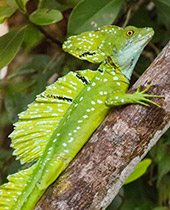All four basilisk lizard species – Common Basilisk, Red-headed Basilisk, Green Basilisk, and Brown Basilisk – have special scales on their toes that unfurl when they hit the water’s surface and create a pocket of air upon which the lizard can stay for the briefest of moments, but long enough to enable them to take rapid steps on water. They do this primarily to escape predators such as snakes, crocodiles or birds of prey.
Juvenile lizards, being much lighter than adults, can cover greater distances on water. When gravity eventually takes over, these lizards rely on their stellar swimming skills to take themselves to safety. They may even stay submerged under water for over 10 minutes! Young basilisks can wield these ‘miraculous’ powers and are independent from the time they hatch.
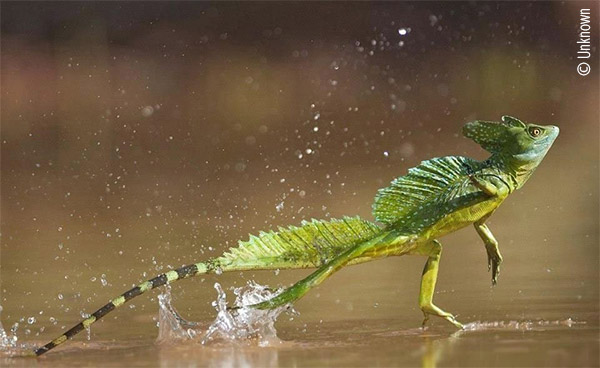
If these abilities are not enough to elicit a ‘WOW’ out of you, it would also be quite a sight to see basilisk lizards using their long tails as a whip to ward off predators!
Costa Rica is one of the best spots on the planet to observe and photograph these fascinating reptiles. On our Classic Costa Rica: Quest for the Quetzal trip, we may come across three basilisk species – the Common Basilisk, the Brown Basilisk (or Striped Basilisk) and the Green Basilisk (or Plumed Basilisk). It is also interesting to note that the name "basilisk", as well as the generic name, Basiliscus, find origin in the Greek word basilískos or the Latin basiliscus. Both words refer to the mythical creature basilisk, which could kill with its mere breath or glance. Thankfully, the real, present-day basilisks will only enchant and not petrify us!
Since all basilisks are diurnal (active at day time), our chances of seeing them are quite good! While we may not necessarily see them running on the water – this only happens when they feel threatened – we will certainly expect some good sightings! Here they are:
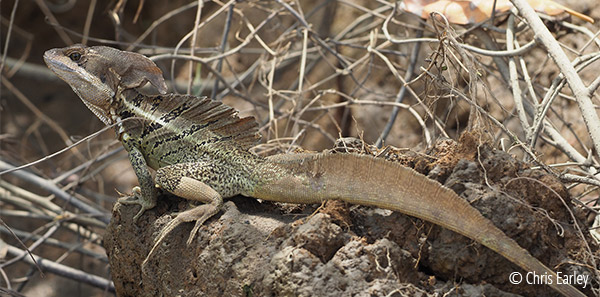
Common Basilisks (Basiliscus basiliscus, pictured above) can be found along water bodies on Costa Rica’s Pacific slope, from northern Guanacaste to the Osa Peninsula and in inland Costa Rica near the Central Valley. They are the most common lizard species in western Costa Rica.
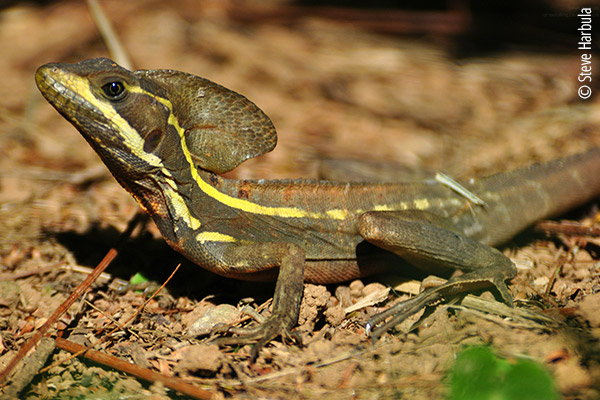
Brown Basilisks (Basiliscus vittatus, pictured above) can be found in coconut groves and other beach areas in wet forests along the Atlantic versant and Caribbean slope. There is a small population living south of the La Fortuna and Arenal area (a place we usually visit) and that is technically on the Caribbean slope.
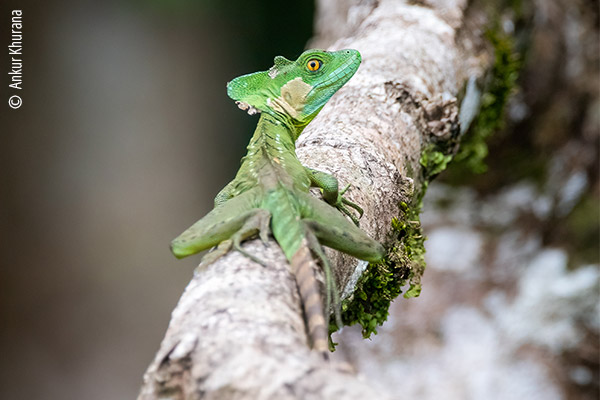
Are you ready to be rendered agape by these miracle-wielding lizards? Join us on our stunning 10-day Costa Rica trip with one of our most experienced and well-known naturalist Kyle Horner, as he leads you on a journey of exploration in search of the basilisks and many other magical creatures!


